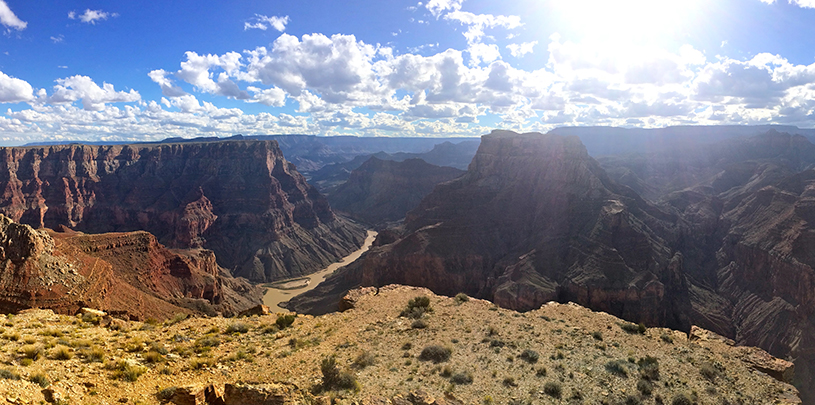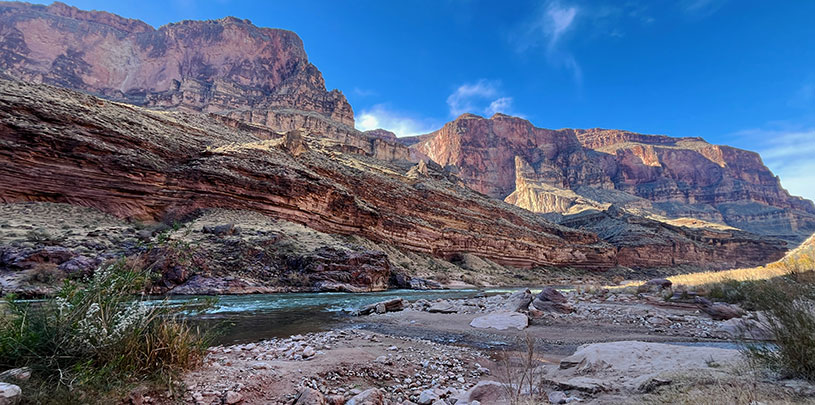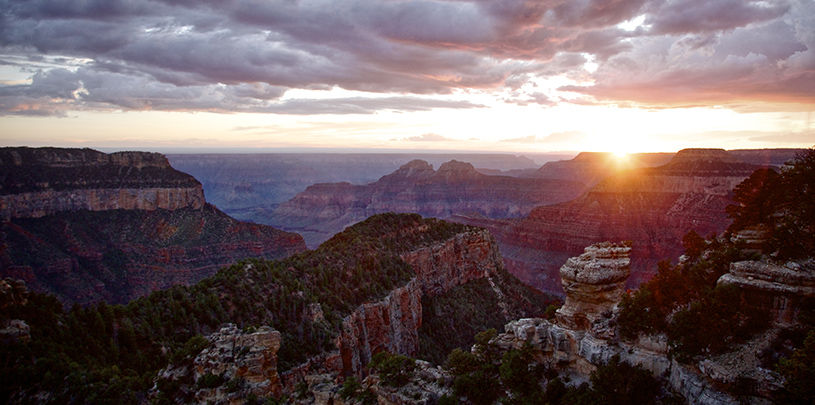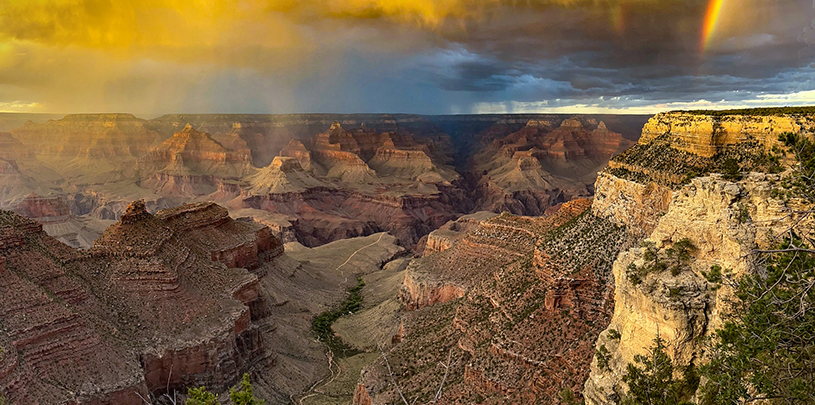
“Wow, there’s nothing out here,” someone exclaims as our van jolts over rocks and through ruts. We are winding down a rocky dirt road, through the vast open space that is the eastern rim of the Grand Canyon.
The next afternoon, delighted shouts pierce the air.
“We found it!”
Students look up from the jagged limestone cliff edge to which their eyes have been glued, and run to examine the discovery.
It is a small, bush-like plant, with thorns that sheath its woody stem. One of its remaining petals falls to the ground as we crowd around to take a closer look. We have found a desert rose, a sensitive species that has never before been documented here on the rim.
We are gathered at the confluence of the Colorado and Little Colorado rivers because of the controversial Escalade legislation. If approved, developers will construct a gondola tramway capable of carrying 10,000 people each day to one of the most sacred places in the Grand Canyon.
Our project
In early October, a group of Northern Arizona University students set out to support the Save the Confluence families in their effort to protect the land from this development. While the local families advocate diligently for the cultural and spiritual value of the confluence, little is publicly known about the ecological importance of its non-human residents.
That’s why 18 students, five botanists, two teachers, and three Grand Canyon Trust staff traveled to the confluence in early October: to discover the ecological value of the rim and to overturn the misconception that “there’s nothing out there.”
What’s out there?
We set out in search of three sensitive species: desert rose, Arizona rabbitbrush, and yellow rabbitbrush. We also searched for one endangered species, the Navajo pincushion cactus.
After hours of surveying the land, consulting with botanists, taking photographs, and making careful observations, we successfully identified both Arizona rabbitbrush and desert rose.
Desert rose, which is only found on the edges of the canyon walls, relies on cool, shady habitat for its survival. Due to the warming climate, however, it has moved upward in search of cooler temperatures and is now found only along the top-most rim of the Grand Canyon.
While desert rose is not currently considered endangered, its limited habitat is rapidly disappearing, and there is nowhere higher to escape. We now know that the proposed development site is one of the few places this rose is able to live.
Grounded in place
After a long day of hard work, we head to the prayer site at the confluence to reflect and appreciate its beauty. Before beginning our walk, local resident Ernest Pekatewa explains the rules of respect and requests that students keep their volume low so as not to disturb the holy beings who reside between the canyon’s walls.
In compliance with his request, students chat quietly as we walk to the site. Upon arriving at the rim, however, the chatter dissipates, and an awed silence overtakes all 30 people standing at the edge. An hour passes just this way, not a sound but that of the wind through the canyon and the occasional rustling of the agave stalks that tower above our heads.
Take action!
“The most special place for us is at the confluence and that’s where we offer our prayers,” says Delores Wilson-Aguirre of Save the Confluence. “Whatever is bothering you, you say your prayers and it’s gone. The holy beings, they listen to you, and they take it away, and you become whole again.”
While the local people speak powerfully about what the confluence means to them, the plant and animal residents cannot speak for themselves. Our dedicated volunteers came together to give voice to the land and the silent species that call it home.
To say “there’s nothing out here” seems impossible now. The confluence is bustling with life. It is a place of quiet, beauty, laughter, and prayer. And thanks to our volunteers, we now know that it is home to at least two sensitive species with few other places to go.
There is value to the land that a development of the Escalade’s scale would certainly, and irreversibly, disrupt. That’s something to fight for.





